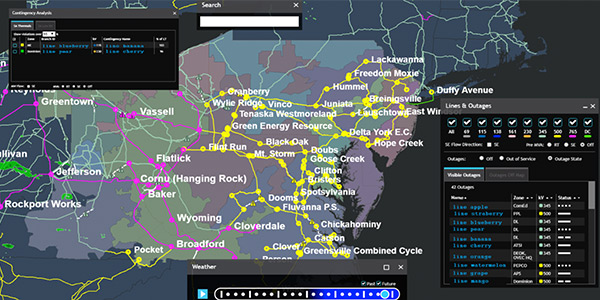PJM presented the Operating Committee with proposed rule changes concerning the testing, compensation, substitution and termination of black start resources Thursday.
Most of the changes involve additions to Schedule 6A of the Tariff and section 4.6 of Manual 12, said PJM’s Becky Davis, who walked stakeholders through a matrix of revisions. She said redline versions of the Tariff and manual language will be available for review by the OC’s July 9 meeting.
The committee approved an issue charge for the initiative at its May meeting. (See “Black Start Issue Charge Endorsed,” PJM Operating Committee Briefs: May 14, 2020.)
The problem statement focuses on four areas:
- Making units that entered black start service through a transmission owner integration subject to the same testing requirements as those compensated under Schedule 6A: a successful test every 13 months.
- Clarifying rules for substituting one black start unit for another. Current rules allow a black start unit owner to substitute one unit for another if the substitute is on the same voltage level and has a valid annual test. PJM said it is responding to an increase in questions about adding, maintaining and managing black start substitutes. The proposed rules would require 40 days’ notice for substitution requests.
- Adding language allowing PJM to replace black start units that fail or do not perform tests without lengthy delays.
- Allowing updates to the capital recovery factor table governing compensation for black start capital costs to remain consistent with current tax law and interest rates.
PJM attorney Steve Pincus said the RTO is not concerned over potential conflicts between its rules and black start units covered by “legacy” agreements with TOs.
Pincus said PJM would look at the agreements on a case-by-case basis to resolve any potential conflict, noting there are only a “handful” of agreements that fall into that category. He said the PJM testing rules are likely more stringent than those in the legacy agreements but that if an agreement with TOs was more demanding than PJM’s, “I’m confident we would not have a Tariff [violation] issue.”
If necessary, Pincus said PJM would seek a Tariff waiver from FERC to address any inconsistencies.
In addition to the four topics in the problem statement, the OC also will consider how to compensate black start owners for their fuel costs under the minimum tank suction level (MTSL) rules. The Markets and Reliability Committee approved the expansion of the initiative to cover MTSL on May 28. (See “Fuel Requirement Issue Charge,” PJM MRC Briefs: May 28, 2020.)
Dispatch Interactive Map Application
Ed Kovler of PJM conducted a first read of a proposed problem statement and issue charge to consider giving TOs access to the Dispatch Interactive Map Application (DIMA), a geospatial situational awareness tool that the RTO’s dispatchers have used since 2014.
PJM and several TOs brought forward draft language for the Operating Agreement to be endorsed through the “quick fix” process documented in Manual 34. The OC will vote on the issue charge at its July 9 meeting.
DIMA allows operators to see the location of problems on the grid in real time and respond quickly.
Kovler said DIMA has been a “paradigm shift” for PJM dispatchers, moving away from old tabular displays that most operation centers have to a geospatial display that helps them better understand the relationship of equipment.
TOs have requested read-only access to DIMA to improve their own operators’ situational awareness, Kovler said.
PJM plans to present the DIMA issue charge at the July and August MRC meetings and the September Members Committee meeting. If endorsed, the OA changes will be sent to FERC in September for review.
Kovler said PJM expects FERC to act in about 60 days and that the RTO will begin implementing the increased access “almost immediately” afterward.
“There’s a lot of IT work that needs to be done,” Kovler said, estimating it could take more than five months to complete. A “phased rollout” could take several months more to complete, he said.




